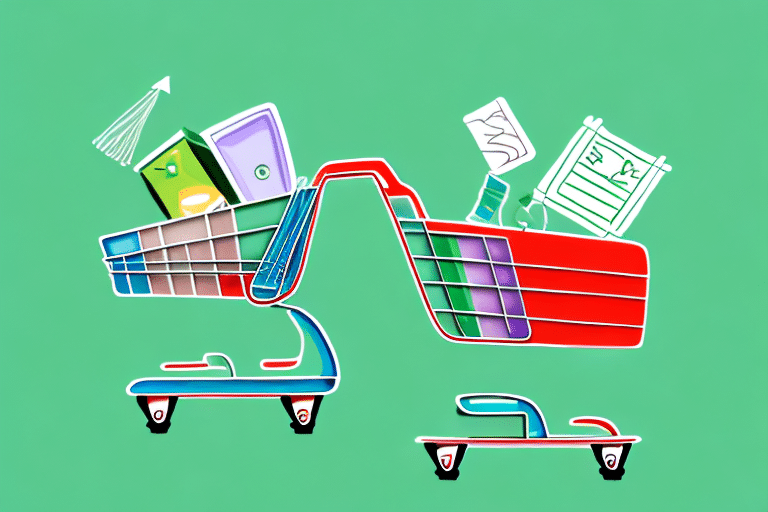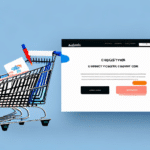Understanding Shopping Cart Abandonment
Shopping cart abandonment is a significant challenge for e-commerce businesses. It occurs when shoppers add items to their cart but leave the website without completing the purchase. According to a 2023 report by BarTender, the average cart abandonment rate across all industries is around 70%. Understanding the underlying reasons is crucial for developing effective strategies to reduce abandonment rates and increase sales conversions.
Common Reasons for Abandonment
- High Shipping Costs: Unexpected or high shipping fees can deter customers from completing their purchase.
- Complicated Checkout Process: A lengthy or confusing checkout process can frustrate shoppers.
- Lack of Trust: Concerns about website security and data protection can prevent users from finalizing purchases.
- Limited Payment Options: Offering only a few payment methods can exclude potential customers.
- Insufficient Product Information: Lack of detailed product descriptions and reviews can make customers hesitant.
Importance of Identifying Absent Factors
By pinpointing the specific obstacles within the shopping experience, businesses can implement targeted solutions. Tools like Google Analytics and Hotjar provide valuable insights into user behavior, helping identify where customers drop off during the purchase process.
Optimizing the Checkout Process
A streamlined and user-friendly checkout process is essential for reducing cart abandonment rates. Simplifying this process can significantly enhance the overall shopping experience and boost conversions.
Simplifying Checkout Steps
Minimize the number of steps required to complete a purchase. Implementing a single-page checkout or reducing the number of form fields can make the process quicker and more intuitive.
Mobile Checkout Optimization
With over 54.9% of global e-commerce sales projected to occur on mobile devices in 2024, ensuring a seamless mobile checkout experience is critical. Responsive design, easy navigation, and fast loading times are key factors in mobile optimization.
Offering Multiple Payment Options
Providing a variety of payment methods caters to different customer preferences and can reduce potential barriers to completing a purchase. Popular options include credit cards, PayPal, Apple Pay, and digital wallets like Google Pay.
According to a Statista survey, offering multiple payment options can increase conversion rates by up to 30%. It’s important to balance the number of options to avoid overwhelming customers while still accommodating diverse preferences.
Building Trust with Customers
Establishing trust is fundamental in encouraging customers to finalize their purchases. Trust can be built through various elements that assure customers of the website's reliability and security.
Incorporating Trust Badges and Security Seals
Displaying trust badges such as SSL certificates, payment provider logos, and security seals can reassure customers that their personal and financial information is protected. Ensure these badges are prominently placed during the checkout process.
Leveraging Social Proof and Customer Reviews
Positive customer reviews and testimonials act as social proof, influencing potential buyers' decisions. Featuring authentic reviews and ratings can enhance credibility and encourage trust in your brand.
Platforms like Yotpo and Trustpilot offer tools to collect and display customer feedback effectively.
Re-engaging Abandoned Cart Customers
Even after a cart is abandoned, there are strategies to re-engage customers and recover lost sales.
Cart Abandonment Emails
Sending timely and personalized emails to remind customers of their abandoned carts can encourage them to complete their purchases. Including product images, descriptions, and enticing offers like discounts can increase the likelihood of conversion.
Retargeting Ads
Retargeting ads serve as reminders to customers who have visited your site but did not make a purchase. Platforms like Google Ads and Facebook Ads enable businesses to create customized ad campaigns targeting these potential customers.
Enhancing User Experience
A positive user experience is essential for retaining customers and encouraging them to complete their purchases.
Streamlining Navigation and Search Functionality
Ensure that your website’s navigation is intuitive and that the search functionality is efficient. Categorizing products logically and incorporating features like predictive search can help customers find what they’re looking for quickly.
Personalizing the Shopping Experience
Personalization can significantly enhance the shopping experience. By leveraging data analytics to understand customer preferences and behavior, businesses can offer tailored recommendations and promotions. Tools like Segment and Adobe Analytics can aid in delivering personalized content.
Utilizing Data to Improve Conversion Rates
Data-driven strategies are essential for continuously improving conversion rates and reducing cart abandonment.
Implementing A/B Testing
A/B testing involves experimenting with different versions of website elements to determine which performs better. Testing variations in design, copywriting, and call-to-actions can provide insights into what resonates best with your audience.
Analyzing Data and Metrics
Regularly reviewing data and metrics helps identify trends and areas for improvement. Utilize tools like Google Analytics to monitor traffic patterns, conversion rates, and abandonment points. This information is invaluable for making informed, strategic decisions.
Providing Exceptional Customer Service
Outstanding customer service can differentiate your business and foster loyalty, encouraging repeat purchases and reducing abandonment rates.
- Responsive Support: Offer multiple channels for customer support, including live chat, email, and phone, ensuring swift and helpful responses.
- Easy Returns and Exchanges: A straightforward return policy can alleviate purchase hesitations.
- Comprehensive FAQs: Providing detailed answers to common questions can help customers resolve issues independently.
Communicating Shipping Costs Clearly
Transparency in shipping costs is crucial to prevent unexpected expenses from deterring customers. Clearly display shipping fees early in the shopping process to ensure customers are aware of the total cost.
Offering free shipping or flat-rate shipping can also be effective strategies. According to a Shopify study, free shipping can increase conversions by over 30%.
Encouraging Rewards Program Sign-ups
Implementing rewards programs or encouraging newsletter subscriptions can enhance customer loyalty and drive repeat business. Offering exclusive deals, discounts, or points for future purchases incentivizes customers to return and complete their transactions.
Platforms like Smile.io and Klaviyo provide tools to create and manage effective rewards and loyalty programs.
By implementing these strategies, e-commerce businesses can effectively reduce shopping cart abandonment rates and boost sales conversions. Continuously monitor performance metrics and adapt strategies to meet evolving customer needs and market trends for sustained success.






















